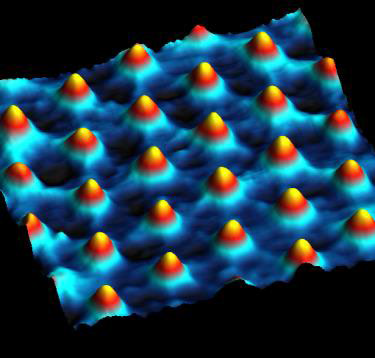22.03.21 - Buckling induced flat bands: giant nanoscale periodic strain
Francois Peeters (University of Antwerp)
Zoom Link: https://zoom.us/j/92548101432

ID: 92548101432
Password: HzF2
Two-dimensional atomic crystals can radically change their properties in response to external influences, such as substrate orientation or strain, forming materials with novel electronic structure. Applying strain to graphene has the same effect as introducing an effective pseudo-magnetic field. Doing so, one has been able to experimentally quantize the electron spectrum into Landau levels corresponding to a magnetic field of 500 Tesla. Such time independent real magnetic fields cannot be realized in the laboratory.
The strain fields induced by periodically buckling graphene result in a periodic pseudo-magnetic field that modifies the electronic band structure. This can lead to the creation of weakly dispersive, ‘flat’ bands similar to what has been found in bilayer graphene for certain ‘magic’ angles of twist between the orientations of the two layers. The quenched kinetic energy in these flat bands promotes electron–electron interactions and facilitates the emergence of strongly correlated phases, such as superconductivity and correlated insulators.
Using scanning tunneling microscopy and spectroscopy, together with numerical simulations, we demonstrated that graphene monolayers placed on an atomically flat substrate can be forced to undergo a buckling transition, resulting in a periodically modulated pseudo-magnetic field, which in turn creates a ‘post-graphene’ material with flat electronic bands. When we introduce the Fermi level into these flat bands using electrostatic doping, we observe a pseudogap-like depletion in the density of states, which signals the emergence of a correlated state. This buckling of two-dimensional crystals offers a strategy for creating other superlattice systems and, in particular, for exploring interaction phenomena characteristic of flat bands.
From the geometry, amplitude, and period of the periodic pseudo-magnetic field, we determine the necessary conditions to access the regime of correlated phases by examining the band flattening. As compared to twisted bilayer graphene the proposed system has the advantages that: 1) only a single layer of graphene is needed, 2) one is not limited to hexagonal superlattices, and 3) narrower flat bandwidth and larger separation between flat bands can be induced. Periodically strained monolayer of graphene can become a platform for the exploration of exotic many-body phases.
Reference
J. Mao, S. P. Milovanovic, M. Anđelković, X. Lai, Y. Cao, K. Watanabe, T. Taniguchi, L. Covaci, F. M. Peeters, A. K. Geim, Y. Jiang, and E. Y. Andrei: "Evidence of Flat Bands and Correlated States in Buckled Graphene Superlattices", Nature 584, 215 (2020).